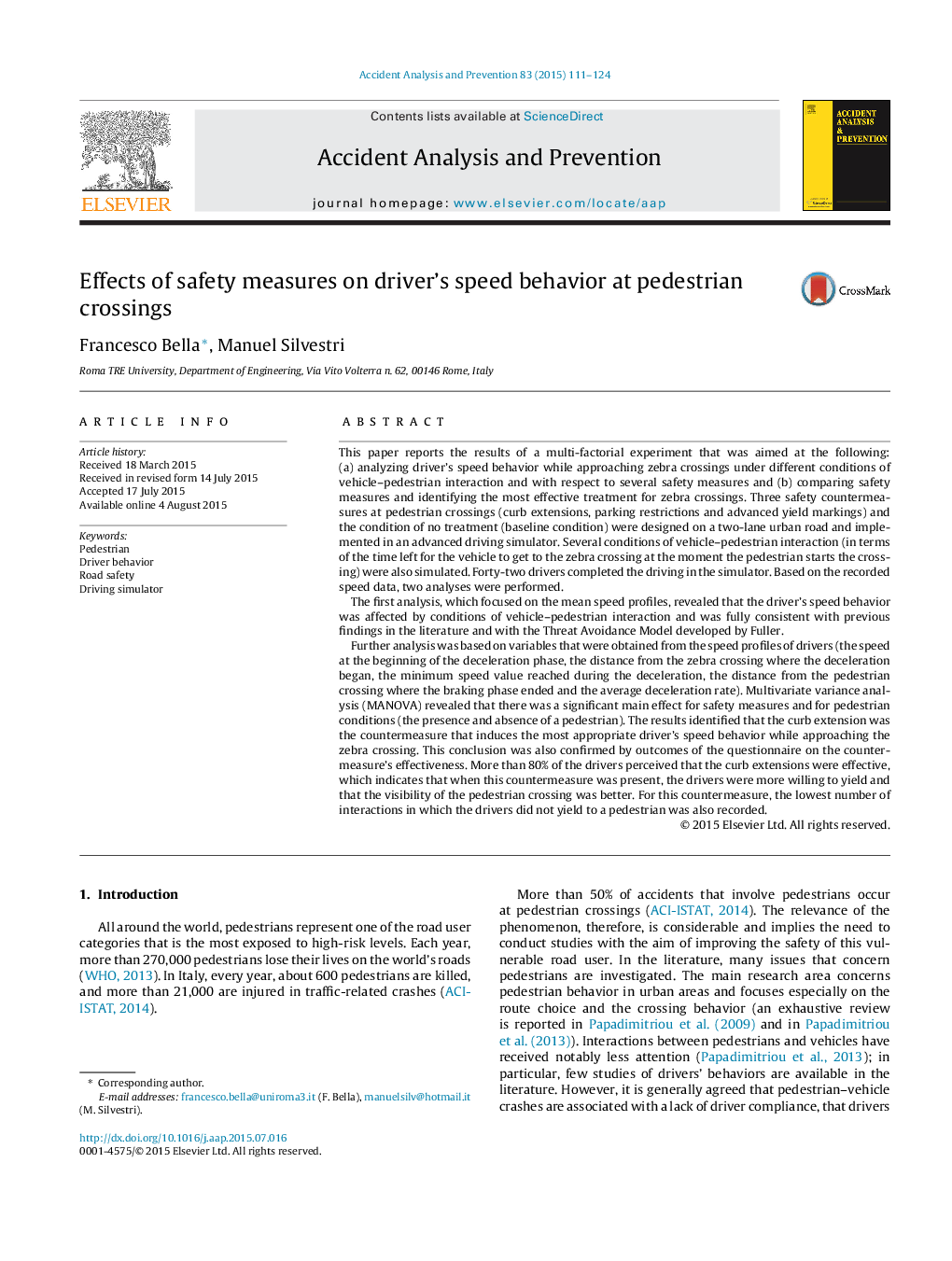| کد مقاله | کد نشریه | سال انتشار | مقاله انگلیسی | نسخه تمام متن |
|---|---|---|---|---|
| 572104 | 1452914 | 2015 | 14 صفحه PDF | دانلود رایگان |
• Driver's behavior at zebra crossings was analyzed using an advanced driving simulator.
• Driver's speed behavior was fully consistent with the Threat Avoidance Model.
• MANOVA showed that curb extensions induced the most appropriate driver's speed behavior.
• Questionnaire confirmed curb extensions were perceived as the more effective measure.
• Curb extensions showed the lowest number of interactions in which the drivers did not yield.
This paper reports the results of a multi-factorial experiment that was aimed at the following: (a) analyzing driver's speed behavior while approaching zebra crossings under different conditions of vehicle–pedestrian interaction and with respect to several safety measures and (b) comparing safety measures and identifying the most effective treatment for zebra crossings. Three safety countermeasures at pedestrian crossings (curb extensions, parking restrictions and advanced yield markings) and the condition of no treatment (baseline condition) were designed on a two-lane urban road and implemented in an advanced driving simulator. Several conditions of vehicle–pedestrian interaction (in terms of the time left for the vehicle to get to the zebra crossing at the moment the pedestrian starts the crossing) were also simulated. Forty-two drivers completed the driving in the simulator. Based on the recorded speed data, two analyses were performed.The first analysis, which focused on the mean speed profiles, revealed that the driver's speed behavior was affected by conditions of vehicle–pedestrian interaction and was fully consistent with previous findings in the literature and with the Threat Avoidance Model developed by Fuller.Further analysis was based on variables that were obtained from the speed profiles of drivers (the speed at the beginning of the deceleration phase, the distance from the zebra crossing where the deceleration began, the minimum speed value reached during the deceleration, the distance from the pedestrian crossing where the braking phase ended and the average deceleration rate). Multivariate variance analysis (MANOVA) revealed that there was a significant main effect for safety measures and for pedestrian conditions (the presence and absence of a pedestrian). The results identified that the curb extension was the countermeasure that induces the most appropriate driver's speed behavior while approaching the zebra crossing. This conclusion was also confirmed by outcomes of the questionnaire on the countermeasure's effectiveness. More than 80% of the drivers perceived that the curb extensions were effective, which indicates that when this countermeasure was present, the drivers were more willing to yield and that the visibility of the pedestrian crossing was better. For this countermeasure, the lowest number of interactions in which the drivers did not yield to a pedestrian was also recorded.
Journal: Accident Analysis & Prevention - Volume 83, October 2015, Pages 111–124
